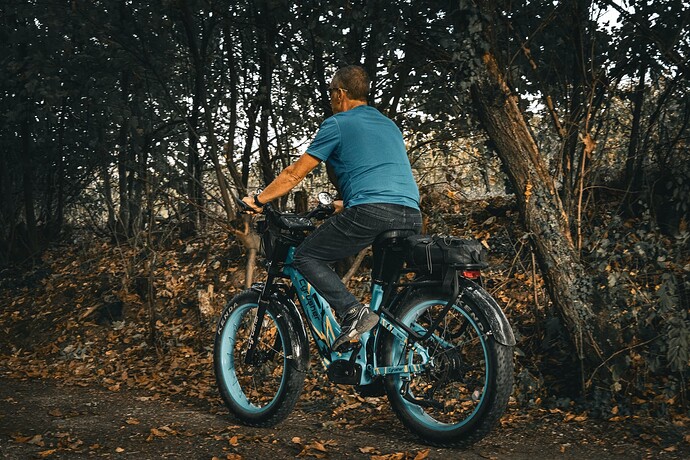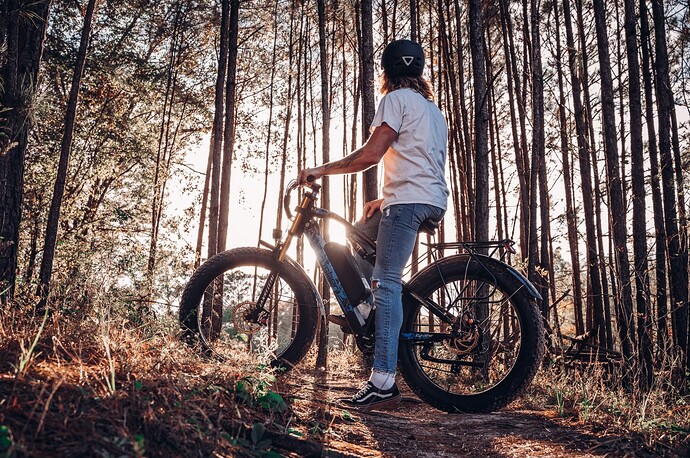The electric bike industry has experienced a significant change by introducing a more advanced categorization of electric mountain bikes. These pedal-assisted vehicles have become incredibly popular among outdoor enthusiasts due to their ability to handle tough terrains effortlessly. Cycling enthusiasts who want to enjoy the sport of biking outdoors will find it invaluable to master the skill of hill climbing. Conquering uphill trails not only enhances the overall riding experience but also opens up new opportunities for exploration.
Key configurations to improve e-bike climbing performance
- Use of fat tires to enhance grip and stability
One of the critical factors that significantly influences hill climbing performance is the utilization of fat tires. These tires have a wider surface area that comes into contact with the ground, resulting in improved grip and stability, particularly on uneven or soft terrains. They ensure a secure foothold during uphill climbs by providing extra traction, enabling the rider to maintain momentum and effortlessly overcome challenging trails.
- Upgraded shock absorption system for smoother riding
In addition, having a robust shock absorption system is crucial for conquering uphill trails. Enhancing the suspension system of your electric mountain bike can significantly improve both comfort and control while scaling hills. A top-notch shock absorption system aids in minimizing the impact and vibration, resulting in a smoother ride over uneven terrain. By experiencing increased comfort, riders can concentrate more on their technique and power output during climbs, thereby boosting climbing efficiency.
- Optimized gear ratio for efficient power transmission
Efficient power transmission plays a crucial role in effortlessly conquering uphill climbs. By optimizing the gear ratios of your e-bike, you can readily maintain an optimal pedaling rhythm, conserve energy and deliver power precisely where it is needed. Selecting the right gears allows you to strike the perfect balance between speed and torque, enabling smooth transitions between different inclines during a climb.
- Choose a motor configuration with stable kinetic energy
Typically, mountain e-bikes come with motors that have a range of power configurations to meet different riding needs. It is known that the higher the motor power, the greater the amount of kinetic energy output. Furthermore, with a more powerful battery capacity, the e-bike can sustain a more robust kinetic energy output for climbing. Therefore, a higher motor configuration is likely to be able to provide superior boosting power, making uphill climbing more accessible for riders.
Tips for ebike hill climbing
After upgrading to a suitable bike for yourself, becoming a more knowledgeable and proficient rider will enhance the ease and pleasure of your hill climbing experience. To effortlessly ascend steep inclines, please adhere to the following comprehensive guidelines.
- Assess the condition of your tires
Make sure that you select the appropriate tire size as it is a crucial component in facilitating uphill cycling. Adjust the tire pressure within the recommended range for different tires to maximize your riding performance.
- Sustain a consistent pedaling cadence
By maintaining a steady and uniform pedaling rhythm, you can optimize the power transmitted from your bicycle wheels. Avoid abrupt acceleration or sluggish pedaling as these actions can impact your power output and overall balance.
- Optimize your gear selection
When facing steep inclines, be sure that you shift to a lower gear to maintain a comfortable and efficient pedaling rhythm. Begin in a lower gear and gradually shift to higher gears to increase power.
- Balance your center of gravity
To enhance traction on the front wheels, particularly during more challenging climbs, shift your center of gravity forward. Maintain a slight forward lean in your upper body to prevent the front wheels from lifting.
- Utilize pedal assist wisely
Adjust the level of pedal assist based on the steepness of the terrain. Opt for higher levels of assistance on steeper grades and lower levels on gentler slopes. Experiment with different boost levels to determine the most suitable one for your needs.
- Ensure proper body positioning
It is crucial to maintain a centered body position and grip the handlebars lightly to support control and stability. Remember to shift your weight slightly from side to side to remain balanced when navigating difficult terrain.
- Plan your route and maintain momentum
Carefully select your route, aiming for the smoothest and least resistant path. Keep a steady momentum and avoid sudden stops or changes in direction as they can hinder your ability to regain speed on uphill slopes.
- Stay focused and positive
Uphill climbing may present challenges, but it is essential to maintain a positive mindset and stay focused on your technique and objectives. Take pride in your progress and accomplishments as you overcome each climb.
Conclusion
Climbing skills are crucial for outdoor cyclists who wish to fully experience the excitement of outdoor exploration. By optimizing the performance of an electric bike using fat tires, improving the suspension system and adjusting the gear ratios, the rider can ensure that the bike has excellent climbing abilities before embarking on a journey. Additionally, by employing the appropriate scaling techniques, the rider can turn each ascent into a remarkable accomplishment of exploration.


